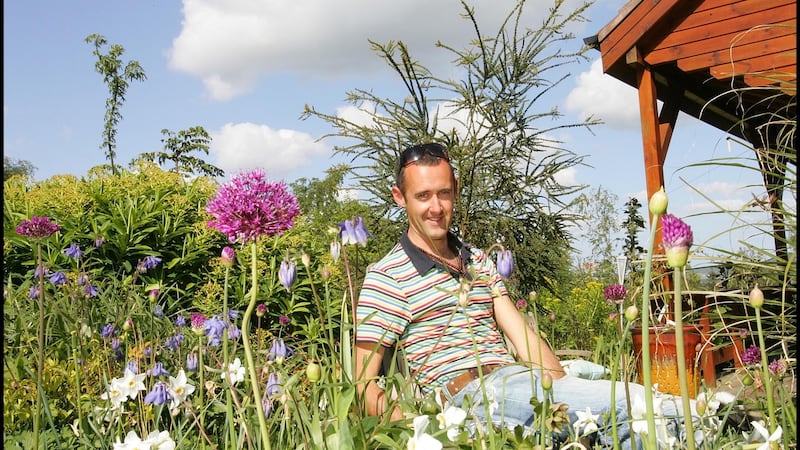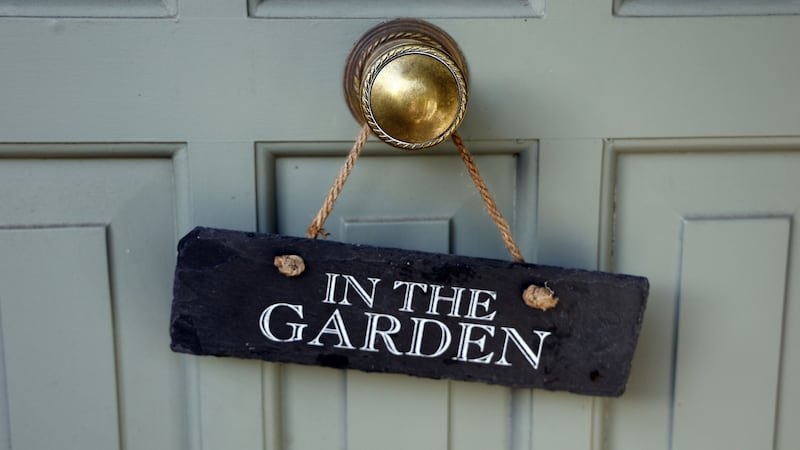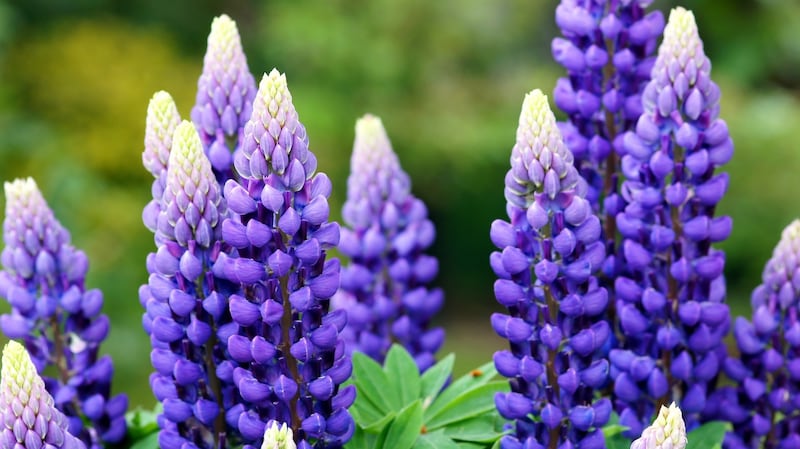Few things illustrate the circle of life as powerfully as gardening. Like horticultural midwives, we gardeners play a small but magical part in that immutable cycle every time we propagate a plant. It might be one that we grew from seed. Or from a cutting given to us by a friend. Or by division of a favourite perennial growing in our garden or allotment. Or (if you’re something of a master gardener) by dint of trickier techniques such as grafting, chipping or layering. Whatever the preferred method, the thrill of helping to bring new life into the world is something that never grows stale.
A passionate gardener as well as a former nurse, midwife and the founder of Nurture Mum (an online platform supporting the health and wellbeing of new mothers and mothers-to-be), Dublin-based Kathy Whyte knows more than a thing or two about the latter. Her own deep-rooted love of plants was nurtured at a very young age by her late mother Mary Whyte, who "if she wasn't at the kitchen sink, was in her garden". Situated just outside Clonmel "on the side of a mountain overlooking Slievenamon", that same rural family garden has been lovingly tended by Mary's husband ever since her death from cancer five years ago.
“My mum spent every minute there that she could. Even on those days when she was away from it, for example, if she was visiting me in Dublin, she’d still be thinking about it and quietly fretting about what my dad, who could be a bit of a monkey when it came to the garden, was up to,” laughs Whyte.
Whyte's own garden is a romantically pretty, nature-friendly plot in Blackrock in south Dublin, that she's created with the help of her friend, the designer Joan Mallon.
“Just as they are for me, flowers really were my mum’s special love; as kids she would give us tiny posies of early snowdrops to bring into the nuns at school.
“Looking back, she was also way ahead of the curve in terms of sustainability. . . long before it was possible to buy a purpose-made water barrel, she made one in her tiny glasshouse using an ingenious, homemade system of pipes supported with coat hangers to harvest rainwater from the roof. She never used chemical sprays such as pesticides or herbicides and always encouraged her children to see the beauty in nature. More and more I appreciate the amazing legacy that she left behind.”
Legacy
Searching for a way to honour that legacy, Whyte found herself returning to the final days of her mother's life and the exceptional care she received at her south Tipperary home from nurses provided by the Irish Hospice Foundation (hospicefoundation.ie), the national charity that addresses dying, death and bereavement in Ireland.
Like all charities it has been hard hit by the pandemic, with its normal fundraising channels – it depends on public and philanthropic donations for 90 per cent of its overall budget – hugely impacted by social-distancing regulations and successive lockdowns.
"Along with honouring my mum's memory, I wanted to acknowledge the outstanding work that Ireland's hospice network does as well as to offer some practical support, which is how I finally hit upon the idea of Pledge to Plant, " explains Whyte.
An ingenious, life-affirming and wonderfully appropriate way to help the charity raise funds while encouraging Ireland’s gardeners to indulge their love of propagation, Whyte’s initiative invites individuals, groups, communities, schools and businesses to sow/raise/grow some plants over the coming weeks with the aim of gifting them to family, friends, neighbours and colleagues on June 26th and requesting a small financial donation towards the Irish Hospice Foundation in return.
“In a normal year the foundation needs a budget of €900,000 to deliver its Nurses for Nightcare service. My dream is to raise €100,000. That would be wonderful.”
Does she have any recommendations as to what kinds of plants people might consider growing?
“It really is a case of whatever takes your fancy,” say Whyte. “So it could be anything from young vegetable transplants or herbs to a few pots of ornamental annuals, divisions of favourite perennials, young shrubs, climbers, baby trees, even houseplants or a handpicked bunch of garden flowers. At this time of year there’s so much that can be quickly raised from seed or from cuttings or divisions. For example, I’m planning to donate some baby pea and courgette plants as well as some sweet pea, lupins and a few beautiful aquilegia from my mum’s garden that have self-seeded there over the years.”

Nationwide plant sale
Encouraged by the Irish garden-designer Paul Martin (she was a member of the small team of Irish gardeners who travelled with him to London in 2016 to help create his gold-medal winning design at the RHS Chelsea Flower Show), Whyte has enlisted the help of some of Ireland's most experienced gardeners to support the nationwide initiative.
Formally launched by Martin and the Cork gardener, writer and presenter Peter Dowdall, other familiar names from the world of Irish horticulture taking part include Colm O'Driscoll of Airfield Gardens in Co Dublin, the garden designer and writer Leonie Cornelius, Jimi Blake of Huntingbrook Gardens in Co Wicklow, Adam Whitbourn, head gardener of Blarney Castle in Co Cork, and Avoca florist Joeanna Caffrey. All are providing practical online, gardening information for the public to tap into including step-by-step videos giving propagation and planting tips/techniques and hands-on growing advice.
All will be available to view on Pledge to Plant’s social media (see below for details) in the weeks leading up to the nationwide plant sale on June 26th while donations can be given at any time via the initiative’s online fundraising page at justgiving.com.
“Just amazing” is how Kathy Whyte described the support and encouragement the imitative has already received.
“Everyone I’ve reached out to has been so happy to come on board that we’re already thinking of turning it into an annual event. In her own quiet way, my mum would be so very pleased.”
justgiving.com/campaign/pledgetoplant
pledgetoplant.ie
Facebook @pledgetoplant, Instagram @hospicepledgetoplant

This Week in the Garden
Pricking out
Pots of baby seedlings sown under cover over the previous few weeks should be pricked out into cell trays or individual small pots as soon as they develop their first true set of leaves (the leaves that are typical of the particular species as mature plants). Always water or bottom-soak seedlings before pricking them out, using a stick or pencil to gently prise them out of the compost while making sure to keep their fragile root systems intact and handling them very gently by their leaves while moving them into their new pots. Water or bottom soak them again immediately after tucking them into the compost and place them somewhere bright, sheltered and frost-free but out of direct sunshine while they re-establish their root systems.

Stake outs
Many kinds of tall late-spring and summer-flowering perennials have already made good bushy growth but some (examples include lupins, delphiniums, peonies and oriental poppies) need discreet staking/support to protect their largest, most brittle stems from collapsing under the weight of their flowers or being damaged by strong winds and heavy rain. It’s best to do this in late spring while the plants are still easily accessible and the plant supports can be easily installed but soon be concealed by fresh growth . Bear in mind that they don’t have to be big wooden stakes; more discreet alternatives include custom-made metal plant supports or cages, wire mesh or plastic mesh netting stretched horizontally and low to the ground or hazel rods bent into hoops or frames. Bamboos or shortened sections of metal rebar are also suitable but make sure to cover any sharp ends with corks or custom-made toppers to protect anyone using or visiting your garden or allotment from accidental eye injuries.















